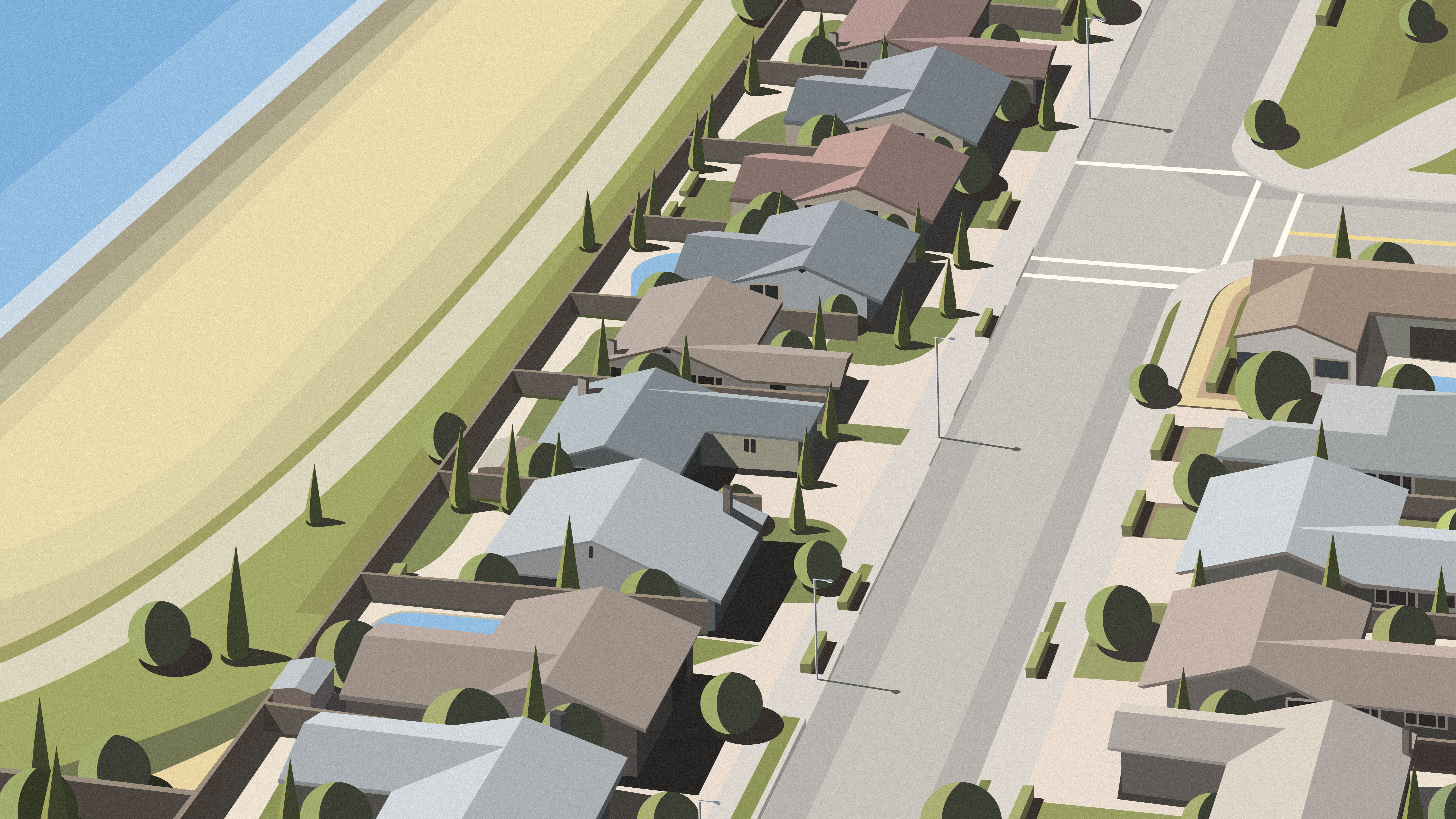IMN #22 — Grant Riven Yun

It's Monday Night #22
Tonight, let’s share thoughts about @GrantYun2’s work: a melancholic and solitary walk through the meanders of contemporary urban architecture.
Let's look at @GrantYun2's digital paintings.
They stand out for their obvious minimalism: they give a stripped-down representation of urban reality that reduces it almost to a diagram.
Each painting is a still image, immediately recognizable (by its function) and yet strictly anonymous (by its location).
The subject of @GrantYun2's paintings is the post-modern figure of the non-place: highly functional and interchangeable, uniform, standardized spaces - spaces that can be found identically in any part of the world (motorway, shopping centre, airport, fast-food restaurant, etc.).
What interests him are urban invariants.
The non-place is a type of space that expresses the force of the fragmentation of globalisation, which fragments existences and makes Western architecture an immense anthropological aberration.
Why? Because architects, designers & town planners seem to have conspired to create an uninhabitable world: transitivity prevails over installation; consumption over use; isolation over sharing, etc.
At least, this is how these non-places have been criticized.
The highways, factories, suburban houses, motorways and petrol stations of @GrantYun2 translate with great precision but sober design what is both universal and apparently foreign to any form of life in these non-places.
It is urban reality itself that has become abstract, and @GrantYun2's painting is merely a reflection of a real abstraction: its minimalism and simplicity reveal a deep understanding of the invisible spatial, economic and cultural logic behind these ultra-modern spaces.
There is almost no human subject in @GrantYun2's painting. When there is, it is a pure silhouette, which anyone could identify with and, paradoxically, it bears witness to an absolute loneliness that is both landmarkless and completely at home in its environment.
But what is curious is that the pictorial universe of @GrantYun2 tells both a dystopian movement of general desertification and the utopia of a refuge that, despite everything, would be recreated in the middle of the desert.
Actually, @GrantYun2's painting is neither utopian nor dystopian: it cannot be described by binary categories.
Precisely, one could say that it is "non-topian": its object is the neutral, and it refrains from formulating any moral judgement on the processes of neutralisation of spaces (the house, the road, the studio, etc.).
It does not indicate what is right or wrong, but merely explores how the experience of space is transformed and attempts to draw the contours of this new geography.
Like any artistic gesture, @GrantYun2's painting involves an element of stylisation - it shows by distorting perception; it speaks by altering language, and so on.
Nevertheless, there is something deeply "objectivist" - in the sense of the poetic trend - in his painting.
By this I mean that he refuses all expressionism, in the sense that he works towards an erasure of the painter's subjectivity (his desire to intensify the real, i.e. his lyricism, his personal associations of ideas, etc.).
By erasing the subjectivity of the painter, he tries to eliminate everything that could be an obstacle to the unveiling of reality - he is in a way searching for the zero degree of the act of painting.
Emotion (melancholy, nostalgia, anguish, etc.) must arise from the perception of the bare relationships between the elements of a situation.
There is no illusionism in @GrantYun2's painting (the image explicitly shows that it is only an image), but it seems to me that the art it most closely resembles is that of photography, even photocopying.
He takes a photographic look at urban landscapes while translating them into a graphic language that borrows from both David Hockney and Edward Hopper. Coldness, characters' isolation, taste for urban and supermodern landscapes, simplified composition are all there.
But, in a sense, @GrantYun2 studies America without curiosity: he looks at it from a certain distance and from an angle; he schematizes it by structuring it according to an artificial geometry; he fades and synthesizes its colours.
All of @GrantYun2's landscapes are both derelict and fully functional. They are neither hostile nor warm, but still have something strangely hospitable about them - they show our fate as exiles and yet they feel like home.
All this organized anarchy - which allows a maximum of interactions in a minimum of space, while isolating the individuals - is haloed by a sanitized, abstract, disconnected beauty.
However, we become aware through it of the unexpected sentimental attachment that binds us to these disembodied spatialities. We feel bound to that which is unrelated to us.
It is presentism that reigns in @GrantYun2's painting: I insist, there is not the slightest trace of futurism in his visual language - even when the scene represented seems to belong to a future time.
Everything is represented in the mode of the present: what is there, already there, what has always been there.
Moreover, the non-places painted by @GrantYun2 are not exactly contemporary to us, they would rather be the idealized representation of America before the year 2000.
But that's not the point: all the paintings belong to an immemorial, mythical time, the one in which our urban unconscious was formed and which makes Seoul or New England look the same - they participate in the same paradigm or archetype.
The painting of @GrantYun2 is like a manifesto that reveals to us, in retrospect, what this ideal city looks like that does not exist anywhere and that is contained in the smallest piece of urban landscape on modern.
This non-existent and yet omnipresent city, we all recognize it without ever having seen it.
Suspending all critical interpretation, @GrantYun2 tries to map it and show the space that, in its sleepwalking, humanity is dreaming, to the point of getting lost in its folds, its surfaces, its flows.
@GrantYun2's genius is to show that, in this dream, humanity disappears and that, nevertheless, it feels at home everywhere.